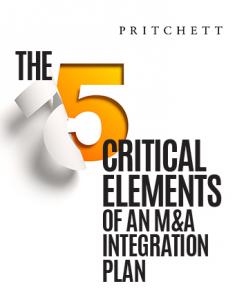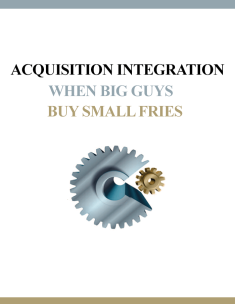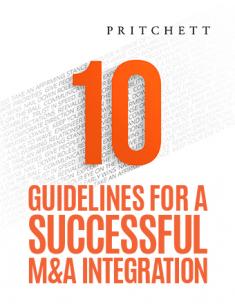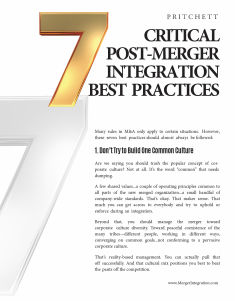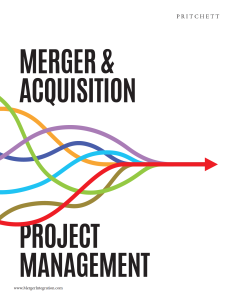M&A integrations slow to a crawl when the endgame and the tasks to get there are vague, undetermined, or not communicated. People tend to shift into neutral and operate with a lower degree of intensity when the path ahead is foggy.
Speed and high performance in M&A are byproducts of clarity. Integration teams build momentum and cover ground at a much faster clip when five areas are clearly defined in their plans.
1. End States
Acquirers should not begin integration planning without first defining their end states.
A few examples of end states . . .
- HR: All employees are on one payroll system, one benefit system, one harmonized compensation system, and redundant positions have been eliminated.
- Information technology: All employees are using common ERP, email, and telephone systems.
- Sales: Sales territories, customer engagement rules, sales support and admin procedures, product portfolio, and pricing changes have been determined and communicated.
- Marketing: The companies are presenting a unified front in terms of advertising, branding, pricing, and hours of operation.
"Integration complete" should be defined. If not, teams will feel like they are in a race without a finish line.
Link to related presentation: End-State Transition
2. Governance
An example of a typical structure for an integration consists of three layers:
- A steering committee
- An integration management office (led by an integration manager) and
- A variety of additional teams organized by function (i.e. sales, human resources, finance, and information technology, etc.) and/or by business unit, product line, process, or geographic location.
Determine the integration hierarchy, decision-making protocols, and escalation routes so problems requiring senior-level input can be quickly addressed and resolved.
Link to related presentation: Post-Merger Integration Framework
3. Communications
Planning communications in M&A takes much more effort than it does under more stable circumstances. Practically everything the acquirer’s management says to the acquired company’s work force will be taken seriously, studied for innuendo, and held up to the light for subtle implications. Communications should be scripted as much as possible so managers don’t improvise and send out wrong or mixed messages.
Link to related playbook: Day 1 M&A Playbook: Employee Communications
4. Tasks
Each task in a team’s plan should have an assigned owner, and start and completion dates. This information should then be rolled up into a master document to help an integration manager identify and manage cross-functional dependencies.The master document and all the critical elements of the plan are the basis of a playbook. A good playbook clarifies what needs to be done, by whom, and by when. It brings consistency, predictability, and reliability to the integration process and shortens the learning curve for team members.
Link to related playbook: M&A Integration Playbook
5. Early Wins
There will inevitably be some integration problems that resisters and doubters will point to as evidence that the deal was a bad idea. Acquirers can help silence the skeptics by achieving goals that provide hard evidence the merger is rapidly bringing benefits. Establishing an early winning streak builds the momentum that is often a prerequisite for an integration’s overall success.
Link to related article: Engineer Early Success in Your Merger

